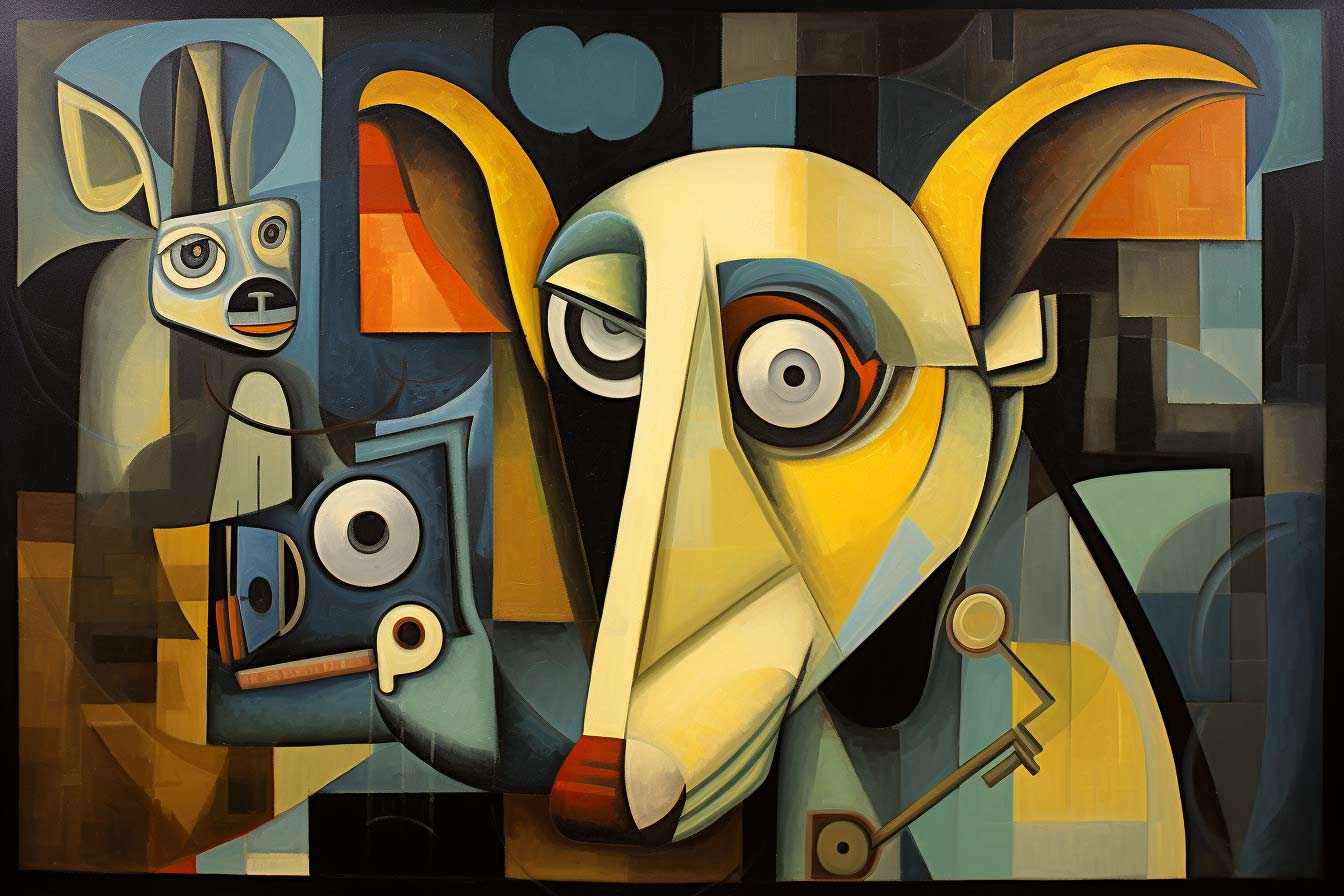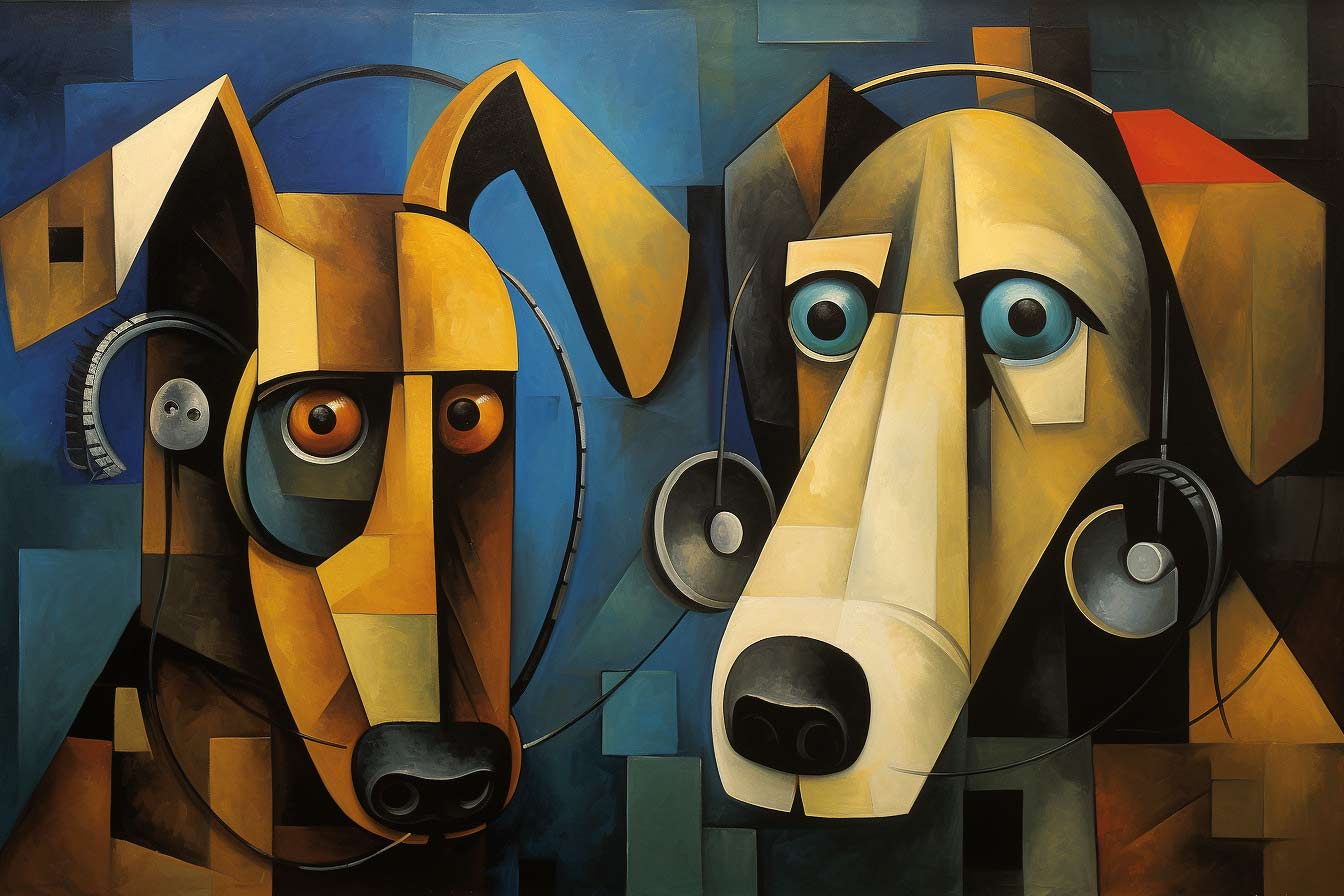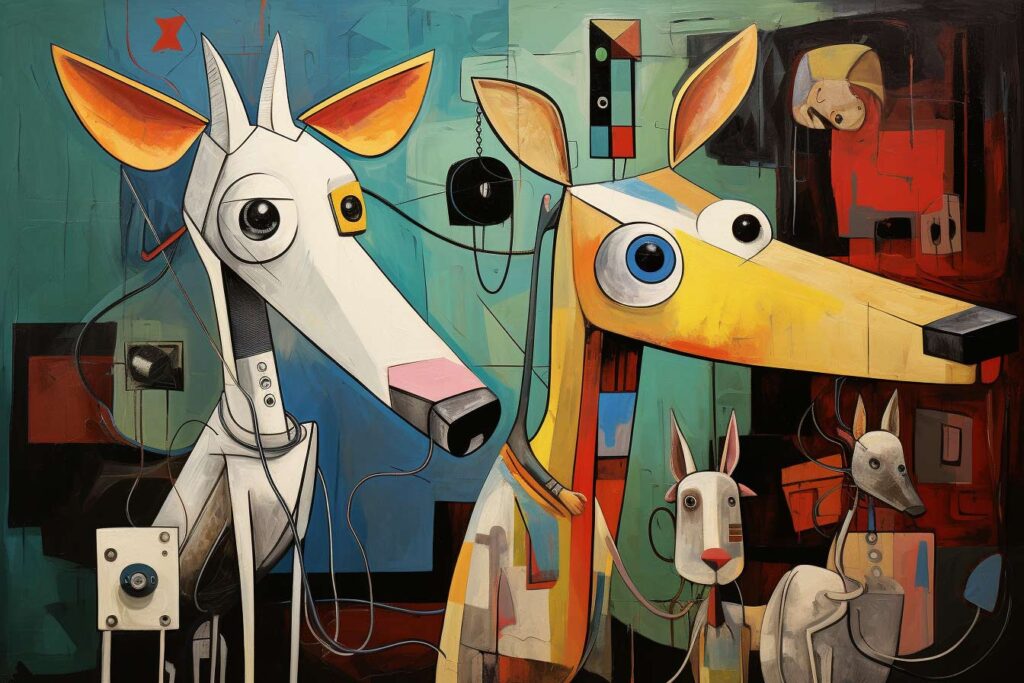The Dawn of a New Era
In painting, as in life, there has always been a tendency to represent the contemporary, the immediate. In this new century, we have not only witnessed drastic changes in technology but also in our ways of life and in the beings that accompany us. A dog of the 21st century is not simply a four-legged creature, but a being that lives and moves in a world surrounded by technological toys and advancements we previously couldn’t fathom.
The Cubist Essence and the Image of the Dog
Cubism, with its fractured shapes and multiple perspectives, gives us an exceptional tool to represent this complex and multifaceted reality. Thus, a domestic dog is not displayed from a single point of view but from several, reflecting its multiple facets and its relationship with the environment surrounding it.
Picasso’s touch, with its bold contours and vibrant colors, can focus our attention on the smart leash, a symbol of the bond between technology and our daily life. On the other hand, Braque’s influence, with his softer palette and geometric shapes, might lead us to observe the technological toys surrounding the dog, each one a testament to our human ingenuity and how we’ve reinvented the ways to play and interact.

Technological Toys
Around our canine protagonist, we see toys that are more than mere objects of entertainment. They are representations of our society, of our obsession with the new, of our insatiable curiosity. Through the cubist lens, these objects transform, fracture, and reconfigure, just like our relationship with technology.
Conclusions in Fragments
When approaching the task of painting this cubist portrait of the 21st-century domestic dog, we are presented with a unique opportunity. Not only to explore shapes and colors but also to reflect on our place in this technologically advanced world. Are we the masters of our creation, or are we simply tethered to it, like the dog to its smart leash?
It’s evident that painting, just like society, is in constant evolution. By merging the cubist vision with the image of the modern dog, a dialogue between past and present, tradition and technology, reality and representation is opened. And so, in this dance of shapes and colors, we witness the continuous transformation of art and of ourselves.”

